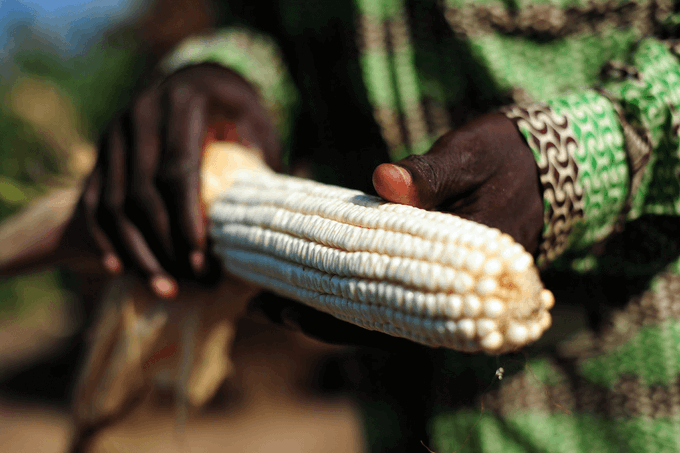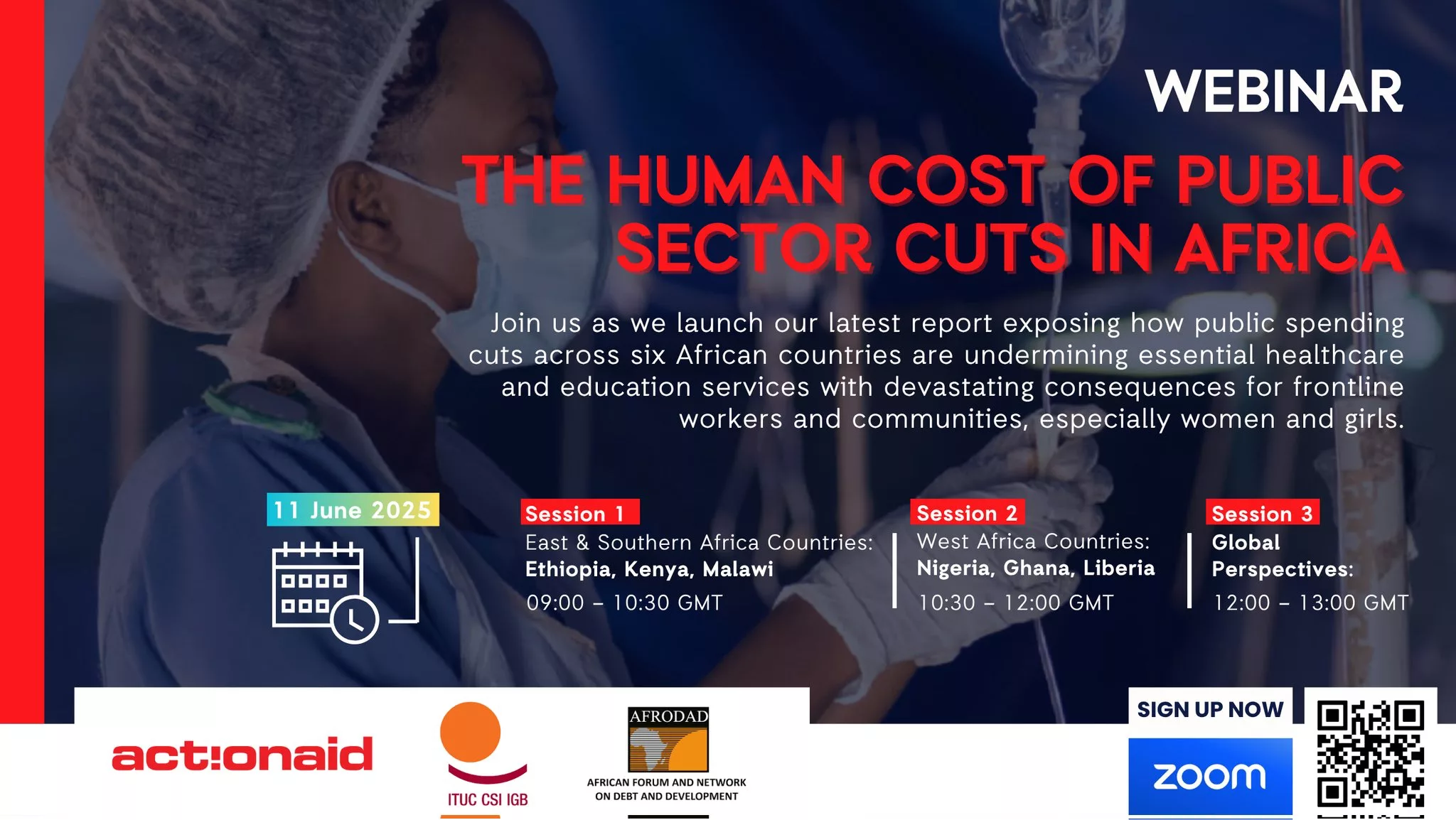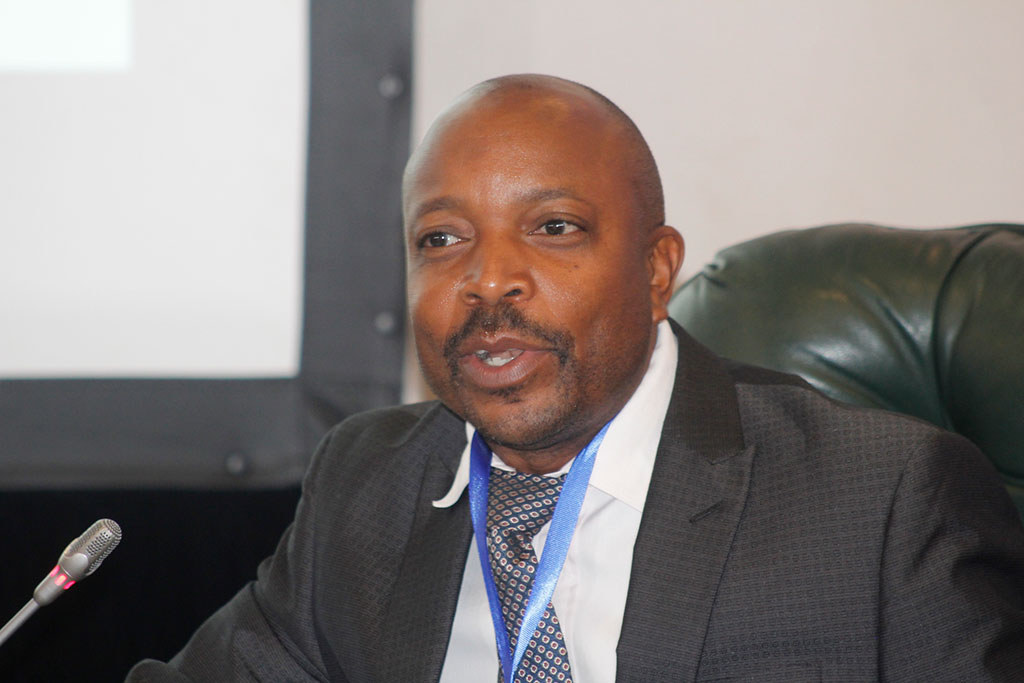|
Getting your Trinity Audio player ready...
|
Here’s a blueprint to unlock the continent’s enormous farm and food potential
The African continent has been home to genetically modified (GM) crops for more than 26 years, beginning in 1996 when insect-resistant GM maize was commercialized in South Africa. Since then, several GM crops have been developed on the continent, including cotton, cowpea, soybean, rice, and Argentine canola (Brassica napus). These crops have been modified to increase agricultural productivity by delivering desirable traits, like pest resistance, herbicide tolerance, and improved nutritional qualities. Such crops are critical for food security, as 7 of the 10 countries most vulnerable to climate change are on the African continent. Drought is a significant challenge for agriculture, and 95% of African agriculture is rainfed, meaning that to improve food and nutrition security for a fast-growing population — expected to grow to 2.5 billion from 1.4 billion people by 2050 — the continent needs to adapt agriculture to climate change while also increasing food production.
Despite the challenges posed by climate change and increasing food demand, only seven countries on the African continent grow GM crops (Figure 2). Two other countries (Egypt and Burkina Faso) historically commercialized GM crops but later imposed bans on the technology, and five other countries have had GM field trials for many years, but have yet to bring a single crop to market.
The lack of GM crop commercialization, even after years of field trials, comes at the expense of millions of dollars of investment in research and the continued impact of the challenges that available GM crops seek to address. In Uganda, losses due to banana bacterial wilt were estimated at $34 million in 2005 and $76 million in 2006. Cassava mosaic disease causes up to 70% yield losses, while cassava brown streak disease causes up to 100% yield losses in susceptible varieties. Scientists in Uganda have developed crop varieties resistant to all these diseases, but farmers have not benefited because even after 15 years of confined field trials, the country has not commercialized any GM crops.
So why have some countries, like Uganda, not approved GM crops while neighboring countries have? To understand why, we compare media coverage, regulatory frameworks, and public opinion related to GM crops across three categories of countries: those with at least one commercialized GM crop, those with confined field trials of GM crops but none commercialized, and those with GM crops that were commercialized and later banned (Figure 2). We also interviewed stakeholders in Nigeria, Uganda, Ghana, Malawi, and representatives from international advocacy groups that work in Africa, and their opinions are included throughout this article. Our work highlights the importance of passing biosafety laws; raising awareness among farmers, especially farmer-based organizations; running consistent and accurate programming in outlets people trust; and making the economic case for GM crops. In addition, efforts like matching R&D funding — and advocating for a science-based branch of government or semi-autonomous agency to approve commercialization of GM crops (rather than a minister) — could help increase GM crop commercialization, as several studies and advocacy groups we spoke with attested.
Biosafety laws are generally a prerequisite for GM crop field trials or commercialization
Biosafety laws, which define legal and institutional frameworks for governing GM organisms, are generally a prerequisite for governments to approve GM crops for commercial cultivation. Of the nine African countries that have or previously had a commercialized GM crop (Figure 2), seven had a biosafety law in place before approving their first GM crop (excluding South Africa and Egypt).
However, many countries with biosafety laws have not approved a GM crop for commercialization, or even conducted confined field trials of GM crops, indicating that biosafety frameworks alone are not sufficient to spur GM approval and adoption (Figure 3). And while having a biosafety law is generally a prerequisite for the commercialization of a first GM crop, it doesn’t mean that the time to the first commercialization will be short. Some countries have biosafety laws in place and have had many years of GM crop field trials, but still have not commercialized a GM crop — in Cameroon, Mozambique, and Ghana, 20, 16, and 11 years, respectively, have passed since they implemented biosafety laws (Appendix: Figure 6). In addition, nine more countries have biosafety laws but still haven’t had confined field trials of GM crops.
Donors and development partners should not interpret the absence of a biosafety law as an inability to conduct research when they are considering which projects to fund. Both Uganda and Tanzania have been conducting GM crop research in confined field trials for years (Figure 1) without biosafety laws, instead using existing legal provisions for the approval of research. Further, the presence of research products that solve pressing agricultural challenges may contribute to the faster development of biosafety laws and eventual commercialization and uptake by farmers — as observed with Bt cowpea in Nigeria (Bt crops contain a gene from the bacterium Bacillus thurigiensis that produces a protein toxic to some insects when eaten). In addition, two countries that commercialized a GM crop did not have a biosafety law in place first: South Africa commercialized a GM crop in 1996 before putting a biosafety law in place in 1997, and Egypt commercialized a GM crop by ministerial decree in 2008 but later banned the growing of GM crops in 2012, citing the absence of a biosafety law as one of the reasons for the ban.
Development of clear, science-based biosafety laws is clearly important to commercializing GM crops, but so too are other regulations, field trials, government capacity to review GM traits, and a wide range of factors from seed prices to extension workers.
All the stakeholders we interviewed believed that having a biosafety law in place was a prerequisite for GM crop commercialization, but that even in the presence of biosafety laws, hindrances, like strict liability, must also be addressed before commercialization can take place. Strict liability means that scientists can be held accountable for impacts associated with the GM crops they develop, even when they were only involved in the research stage of the crop. So far there has been no legal case against GM crop researchers based on strict liability clauses, but stakeholders indicate that the overall feeling is that it is not worth the risk. The stakeholders also stressed that advocacy must be sustained even after a biosafety law is in place to build public support for research in GM crops, and later to enable successful adoption once the GM crops are commercialized.
Looking at the nature of the biosafety law, designating the National Biosafety Management Agency as the competent authority in Nigeria may have been vital to success, as opposed to having a government ministry handle approval. This is because the agency is led by experienced scientists, whereas the ministry heads are political leaders that act more based on public opinion rather than scientists’ input. The same strategy was adopted by Kenya when it transferred the approval authority from the government ministry to a semi-autonomous agency, which may have led to the successful commercialization of Bt cotton.
The case of Malawi is different, as its approvals are handled by the Ministry of Environment, which is advised by a technical team. So far, one GM crop has been commercialized through this system and a second is on its way to commercialization. This approach is unreliable, however, as it is highly dependent on the political will of the minister, which could easily change with the appointment of an anti-GM minister. However, the minister’s technical team can use empirical evidence to inform the minister’s decision-making.
Internationally, the stakeholders interviewed believed that trade partners, like the European Union, wield a lot of influence over the political decisions in Africa, and are partly responsible for the low number of commercialized GM crops. To address this, African representatives can participate in international forums, like the Convention on Biological Diversity, to influence the opinions and political positions of such trade partners.
Awareness of GM crops is low in countries that haven’t commercialized them
Public and particularly farmer awareness and support of GM crops is typically considered to be important for ultimately driving government approval and widespread farmer adoption. Among the groups of respondents surveyed, farmers were the least aware of GM crops; however, farmers with basic knowledge about GM crops agreed less with risks of GM crops — and more with some benefits — than farmers without basic knowledge, supporting the idea that education can shift perceptions. Farmer knowledge about GM crops, and belief that the benefits outweigh the risks, is certainly important for GM crop adoption, and may be for approval as well.
Levels of awareness in countries that haven’t commercialized GM crops are often low, according to our analysis of public opinion surveys conducted in countries with GM crop trials, biosafety laws, or approvals (Appendix: Figure 7). In surveys of farmers, awareness of GM crops increased in Ghana after the 2012 passage of a biosafety law, and was lowest in Tanzania, a country that has still not passed a biosafety law. Knowledge of GM crops was positively correlated with approval, as was knowledge of GM policies. However, awareness among farmers in Nigeria — after a biosafety law was passed and a first GM crop was commercialized — was similar to awareness in Ghana right after the country passed a biosafety law. A country’s progress on passage of a biosafety law, confined field trials, or commercialization of a GM crop could contribute to farmer awareness of GM crops through increased media coverage of the topics or increased outreach.
Awareness is especially low among farmers, a group that is particularly important for GM crop adoption, and potentially for policy progress on passage of a biosafety law and eventual commercialization. Among studies that included multiple categories of respondents, farmers consistently had the lowest level of awareness, compared to other groups. In Tanzania in 2015, farmers had by far the lowest awareness of GM crops (24%), while regulatory authorities had the highest (88%), and academics and media fell in the middle around 50%. Similarly, consumers in Kenya in 2011 had much higher awareness of GM crops than farmers.
Low farmer awareness may be related to education or income. One study of farmers found that both more years of education and use of a credible seed source were correlated with higher awareness of GM crops. In groups more highly educated than farmers, awareness is usually higher. Studies of university students in Ghana and Ethiopia show high levels of awareness and optimism about GM crops — 95% aware and 72% optimistic, respectively. Studies in Ghana of households with formal education, higher-income urban populations, and supermarket shoppers — who are relatively high-income — all found that more than 90% of respondents had heard or read something about GM foods.
In addition, even though many of the surveys summarized in Figure 7 (Appendix) indicate overall positive attitudes toward GM crops or food, even supportive farmers and consumers are concerned about a variety of risks. For example, one study showed that of respondents who had heard of or read about GM crops, 75% agreed that GM crops provide improved crop varieties, but 69% agreed that a risk of GM crops is potential market failure. In another study, 80% of respondents agreed that GM crops can improve food security, but 71% agreed that an associated risk is the high cost of seeds. These results indicate that there is substantial overlap between respondents who agree with both benefits and risks.
Some of these concerns reflect low levels of understanding. For example, in an Eswatini supermarket study, researchers started by asking respondents whether they were aware of GMOs, then asked additional questions to determine which of the people who said they were aware of GMOs had objective knowledge — they determined that 32% had objective knowledge of GMOs and 68% did not. Greater and improved media coverage of GM could help improve awareness among farmers and other groups, shift perceptions of risks and benefits, and ultimately build a more science-based regulatory framework for GM crops.
Media coverage of GM crops is similar across six countries regardless of commercialization status
Media coverage of GM crops influences policy-making and the eventual adoption of GM crops, and studies have shown that media is a key tool for advocacy. We examined how the focus of news articles about GM crops varied across countries that have and haven’t commercialized GM crops (Figure 5). We analyzed the number of times keywords appeared from three different categories: economics, food security, and climate change. Figure 5 below shows the percentage of the keywords identified that fall into each of the three categories. Though media coverage leaned heavily toward economics-related keywords, like trade and price, there was no large difference in focus across groups of countries, suggesting that topical focus of media is not an important determinant of GM approval.
The focus of media coverage on economics across all the countries studied suggests that governments, the public, and farmers all have economic growth and poverty reduction as a high priority. This is not to suggest that African countries don’t prioritize or take action on climate change. Kenya, Zambia, and Ethiopia generate more than 50% of their power from renewables — compared with just 20% in the United States — despite the continent’s minuscule historical contributions to global greenhouse gas emissions and need to increase power generation to reduce poverty.
Nevertheless, other elements of media coverage may play a role, like sentiment (e.g., positive, negative, or neutral), the direction of communication (top-down vs bottom-up), the types of voices included in media, and frequency and timing of coverage.
The stakeholders interviewed for this study observed that GM advocacy through the media (for example, opinion articles) could improve by coordination between different advocacy groups, and by consistent and sustained messaging. Despite having several advocacy groups within each country, media advocacy is often not coordinated with a common message about the benefits of GM crops. Current funding models for media advocacy support training workshops for various groups, including journalists, farmers, and policymakers. But when media publications about GM are concentrated following such workshops, it means that there is a long wait period between one campaign and the next, which makes it easy for the public to forget the message. In addition to coordinating messaging and campaigns between advocacy groups, funding for sustained communication campaigns is preferable as opposed to having reactive or isolated communication efforts. Sustained communication activity could include such activities as a TV show, radio talk show, or newspaper column that runs weekly for six months or more. International advocacy groups have tried to achieve sustained activity with constant blogs and weekly newsletters, but this approach is lacking for many African-based groups.
In addition to coordination of messaging between different advocacy groups, coordination of technical terminology and language is crucial. Though our analysis for this study focused on English-language media, in many African countries less than half the population speaks English, meaning that communication via radio and TV stations in local languages is crucial. For radio and TV communication about GM crops to be effective in many different languages and localities, communicators must agree on terminology to use in each language for GMOs, genome editing, etc. Coordination of GM crop terminology across languages is another opportunity for advocacy groups to work together.
Another important aspect of communication about GM crops through media is accuracy of information. In a recent study, the Alliance for Science found that 40% of articles published on GMOs in Kenya contained misinformation that was not rebutted within the article. In a previous study, the Alliance found a 20% rate of GMO misinformation in African media as a whole. To address this issue, journalists and media must provide context and rebuttal for false statements rather than just reporting the controversy, which suggests one important focus for media training.
Another observation from one of the stakeholders was an alienation of African media with references to Western science and utilization of examples that do not resonate with the African context. It is important to cultivate a culture of quoting African scientists and African examples while communicating about GM crops to make the message more relevant to African readers.
Lastly, some stakeholders recommended that communication be carried out both bottom-up and top-down, so not only scientists are communicating but also farmers and the general public. Feedback from farmers and the general public could help ensure that scientists and advocates specifically address the concerns of end-users, which could help create GM crops that solve pressing agricultural challenges and generate enthusiasm and public support for GM crop research. An example of such an approach is a community-based meeting with the local people directly interacting with the researchers working on GM crops. As evidenced by the case of Bt cowpea in Nigeria, relevant GM crops that solve current agricultural challenges may result in a push for commercialization of those crops.
Some studies looked at factors influencing respondents’ perception of GM crops. One study found that farmers who got information from extension officers, agro-input dealers, and friends or relatives had a more accurate understanding; and farmers who got information from mass media, particularly radio and television, had a less accurate understanding. And no wonder. In a study of several groups, a whopping 77% of respondents in media agreed that GM food can damage people’s health, as opposed to a substantially lower 51–54% of regulatory authorities, academicians and farmers.
Given the correlation of accurate understanding of GM crops with getting information from sources outside mass media, the authors recommend that the National Biosafety Authority strengthen education on GM crops through media, particularly to Farmer Based Organizations, and especially through radio and television. Media coverage is powerful because farmers who got information from mass media were more confident in their knowledge of GM crops than those who got information from other sources. Surprisingly, membership in a farmer-based organization was correlated with lower awareness of GM crops, supporting the recommendation to specifically conduct outreach to these groups.
Provide creative forms of R&D funding
Many stakeholders identified the low levels of government investment in GM crop research as one of the reasons why governments in some countries were reluctant to pass biosafety laws and approve GM crops. The gap created by limited local investment in GM research is filled by donor funds, which has fueled the perception by a section of the public and anti-GM groups that GM crops are a foreign agenda.
To encourage more local investment in GM research that could increase political will, research funders should adopt a matching fund model. This is where governments are required to commit a set amount of resources to a research project that is then matched by donor funds. A matching funding model has been adopted for other development projects, like those in infrastructure (construction of the Kampala Northern Bypass) and in agriculture (Chase Hunger and Poverty project under the Development Initiative for Northern Uganda program). Hence, it would not be a new concept to governments if it were proposed for GM crop research. With a significant amount of public funds invested in GM research and in advocacy for the technology, the government may be more motivated to reap the benefits of that investment by putting in place conducive conditions for the commercialization of GM crops.
Next steps
Media coverage of GM crops across all the countries we studied focused more on economics than on food security or climate change. Both our research on existing biosafety laws and the stakeholder interviews we conducted indicate that passing biosafety laws is an important precondition for commercialization of a GM crop. In addition, our stakeholder interviews suggest that having a science-based branch of government or semi-autonomous agency in charge of GM crop approval makes approval more likely. Public opinion surveys generally indicate positive perceptions of GM crops, both in countries that have commercialized crops and in those that don’t, suggesting that public opinion is not a central barrier to GM crop commercialization; however, common concerns across countries are environmental impacts, food safety, and human health, suggesting that public engagement should focus on these topics.
Being able to define the economic benefits of technology — in this case, agricultural biotechnologies — is key to securing political will and public support in developing countries like those in Africa. The discussion of biotechnology benefits within the framing of the bioeconomy has gained traction in areas like the United States, China, India, and the European Union, all of which have published bioeconomy strategies.
Methods
We searched AllAfrica.com to find the websites they obtain their news articles from for the countries we were analyzing. We supplemented this list with websites used by Cision Media Insights for the same countries — as highlighted in the supplemental section of the publication on the state of the GMO debate by Sarah Evanega and colleagues.
We then searched those news websites using GM crop relevant keywords. We identified these keywords by reading a sample of news articles about GM crops and searching for the various technical and non-technical words that people use to refer to genetically modified crops (Appendix: Media analysis search terms). This was followed by web scraping the title, link, date of publication, and text of the articles into .csv files using aGoogle Chrome web scraper extension. After compilation of the scraped text, articles for which the scraping tool missed the body of the article, the scraped article title was used to retrieve the full text.
The articles were further organized according to the year of publication and screened to consider the years 2016–2019. This was because commercialization of GM crops in the countries we studied was after 2019 (Kenya, Nigeria, Malawi). Therefore, we looked at media coverage in the years leading up to commercialization. For purposes of comparison, we analyzed the same years for the countries that have not yet commercialized any GM crop (Uganda and Tanzania) — and for Egypt that commercialized and later banned the growing of GM crops. Through this process, we gathered a final sample of 1,004 articles for further analysis.
We searched each article for three categories of keywords: economics, food security, and climate change. To choose keywords to include in each category, we picked a sub-sample of the articles (14 out of 1,004 articles), read through them, and identified terms associated with the benefits of GM crops. This was followed by screening the generated list of words to remove those that were ambiguous (i.e., could be associated with more than one category of keywords). Following that process, we generated a list of keywords under each of the categories (Appendix: Media analysis keywords), after which the articles were searched for the number of times they featured the keywords from each category. To ensure that the difference in the number of keywords between categories did not affect the observed percentage focus, we listed the same number of keywords for all three categories.
After identifying the number of keywords in each category (absolute score), each number was divided by the total number of words in each article to normalize for the length of the article (relative score). We calculated the average relative score for each category for all articles analyzed for each year. With the summation of all the average relative scores for a given year taken to be equivalent to 100%, we calculated the percentage focus for each keyword category in a year and plotted these on a stacked bar graph.
We identified stakeholders from Nigeria, Uganda, Ghana, Malawi, and representatives from international advocacy groups that work in Africa.
Source: Genetic Literacy Project






